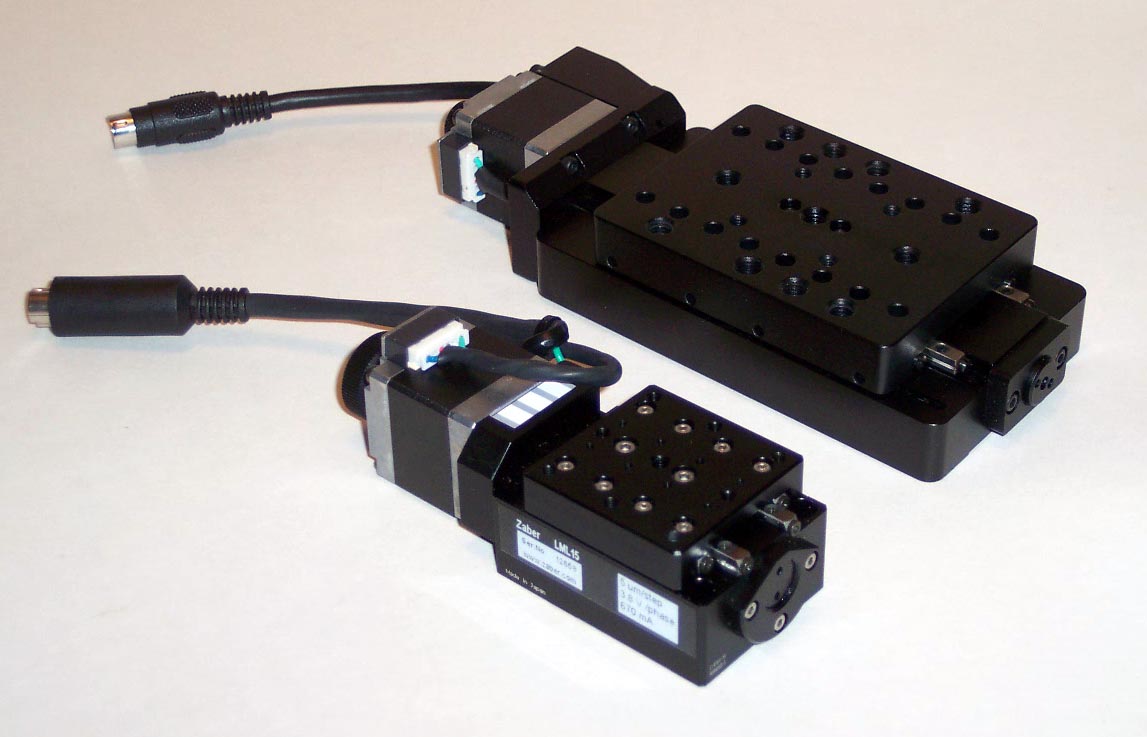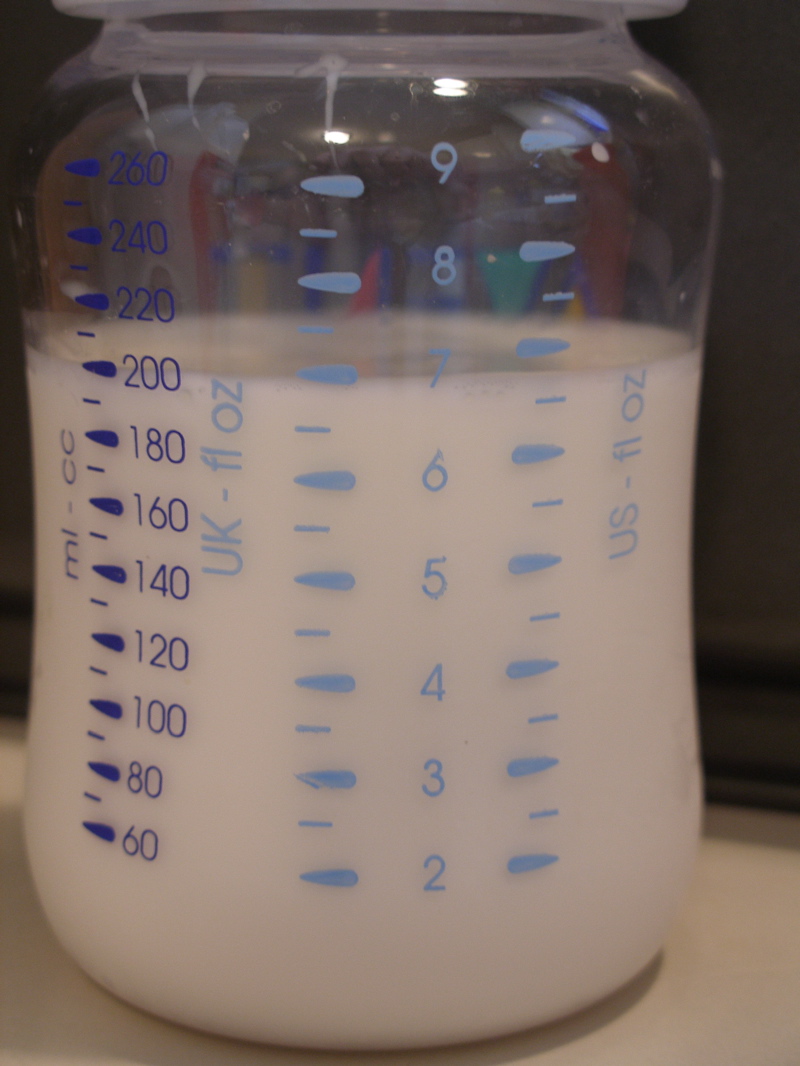|
Motion System
{{refimprove, date=September 2007 Motion system in engineering and systems, is a component of a test and measurement system that provides motion to a load or loads in a one or many directions. Generally a motion system is made up of a set (or stack) of linear and rotational stages. A linear stage moves in a straight line, while a rotation stage moves in a partial or full circle. A stage can either be manually controlled with a knob control, or automated with a motion controller. A motion system generally is computer controlled and can perform fast, reliable, repeatable, and accurate positioning of loads. Most systems will support motion in X and Y directions, which is referred to as an XY stack. Often either a Z axis (up/down motion) or R axis (rotational motion) is placed on top of the XY stack. For automated stages, a scale can be attached to the internals of the stage and an encoder used to measure the position on the scale and report this to the controller, thereby dete ... [...More Info...] [...Related Items...] OR: [Wikipedia] [Google] [Baidu] |
Experiment
An experiment is a procedure carried out to support or refute a hypothesis, or determine the efficacy or likelihood of something previously untried. Experiments provide insight into cause-and-effect by demonstrating what outcome occurs when a particular factor is manipulated. Experiments vary greatly in goal and scale but always rely on repeatable procedure and logical analysis of the results. There also exist natural experimental studies. A child may carry out basic experiments to understand how things fall to the ground, while teams of scientists may take years of systematic investigation to advance their understanding of a phenomenon. Experiments and other types of hands-on activities are very important to student learning in the science classroom. Experiments can raise test scores and help a student become more engaged and interested in the material they are learning, especially when used over time. Experiments can vary from personal and informal natural comparisons ... [...More Info...] [...Related Items...] OR: [Wikipedia] [Google] [Baidu] |
Measurement
Measurement is the quantification of attributes of an object or event, which can be used to compare with other objects or events. In other words, measurement is a process of determining how large or small a physical quantity is as compared to a basic reference quantity of the same kind. The scope and application of measurement are dependent on the context and discipline. In natural sciences and engineering, measurements do not apply to nominal properties of objects or events, which is consistent with the guidelines of the International Vocabulary of Metrology (VIM) published by the International Bureau of Weights and Measures (BIPM). However, in other fields such as statistics as well as the social and behavioural sciences, measurements can have multiple levels, which would include nominal, ordinal, interval and ratio scales. Measurement is a cornerstone of trade, science, technology and quantitative research in many disciplines. Historically, many measurement syste ... [...More Info...] [...Related Items...] OR: [Wikipedia] [Google] [Baidu] |
System
A system is a group of interacting or interrelated elements that act according to a set of rules to form a unified whole. A system, surrounded and influenced by its open system (systems theory), environment, is described by its boundaries, structure and purpose and is expressed in its functioning. Systems are the subjects of study of systems theory and other systems sciences. Systems have several common properties and characteristics, including structure, function(s), behavior and interconnectivity. Etymology The term ''system'' comes from the Latin word ''systēma'', in turn from Greek language, Greek ''systēma'': "whole concept made of several parts or members, system", literary "composition"."σύστημα" , Henry George Liddell, Robert Scott, ''A Greek–English Lexicon'', on Pers ... [...More Info...] [...Related Items...] OR: [Wikipedia] [Google] [Baidu] |
Structural Load
A structural load or structural action is a mechanical load (more generally a force) applied to Structural engineering#Structural elements, structural elements. A load causes stress (physics), stress, deformation (engineering), deformation, displacement (vector), displacement or acceleration in a structure. Structural analysis, a discipline in engineering, analyzes the effects of loads on structures and structural elements. Excess load may cause structural failure, so this should be considered and controlled during the design of a structure. Particular mechanical structures—such as aircraft, satellites, rockets, space stations, ships, and submarines—are subject to their own particular structural loads and actions. Engineers often evaluate structural loads based upon published regulations, contracts, or specifications. Accepted technical standards are used for acceptance testing and inspection. Types In civil engineering, specified loads are the best estimate of the actual l ... [...More Info...] [...Related Items...] OR: [Wikipedia] [Google] [Baidu] |
Linear
In mathematics, the term ''linear'' is used in two distinct senses for two different properties: * linearity of a '' function'' (or '' mapping''); * linearity of a '' polynomial''. An example of a linear function is the function defined by f(x)=(ax,bx) that maps the real line to a line in the Euclidean plane R2 that passes through the origin. An example of a linear polynomial in the variables X, Y and Z is aX+bY+cZ+d. Linearity of a mapping is closely related to '' proportionality''. Examples in physics include the linear relationship of voltage and current in an electrical conductor ( Ohm's law), and the relationship of mass and weight. By contrast, more complicated relationships, such as between velocity and kinetic energy, are '' nonlinear''. Generalized for functions in more than one dimension, linearity means the property of a function of being compatible with addition and scaling, also known as the superposition principle. Linearity of a polynomial means that its de ... [...More Info...] [...Related Items...] OR: [Wikipedia] [Google] [Baidu] |
Rotational
Rotation or rotational/rotary motion is the circular movement of an object around a central line, known as an ''axis of rotation''. A plane figure can rotate in either a clockwise or counterclockwise sense around a perpendicular axis intersecting anywhere inside or outside the figure at a ''center of rotation''. A solid figure has an infinite number of possible axes and angles of rotation, including chaotic rotation (between arbitrary orientations), in contrast to rotation around a axis. The special case of a rotation with an internal axis passing through the body's own center of mass is known as a spin (or ''autorotation''). In that case, the surface intersection of the internal ''spin axis'' can be called a ''pole''; for example, Earth's rotation defines the geographical poles. A rotation around an axis completely external to the moving body is called a revolution (or ''orbit''), e.g. Earth's orbit around the Sun. The ends of the external ''axis of revolution'' can be ... [...More Info...] [...Related Items...] OR: [Wikipedia] [Google] [Baidu] |
Linear Stage
A linear stage or translation stage is a component of a precise motion system used to restrict an object to a single axis of motion. The term linear slide is often used interchangeably with "linear stage", though technically "linear slide" refers to a linear motion bearing, which is only a component of a linear stage. All linear stages consist of a platform and a base, joined by some form of guide or linear bearing in such a way that the platform is restricted to linear motion with respect to the base. In common usage, the term linear stage may or may not also include the mechanism by which the position of the platform is controlled relative to the base. Principle of operation In three-dimensional space, an object may either rotate about, or translate along any of three axes. Thus the object is said to have six degrees of freedom (3 rotational and 3 translational). A linear stage exhibits only one degree of freedom (translation along one axis). In other words, linear stages opera ... [...More Info...] [...Related Items...] OR: [Wikipedia] [Google] [Baidu] |
Straight Line
In geometry, a straight line, usually abbreviated line, is an infinitely long object with no width, depth, or curvature, an idealization of such physical objects as a straightedge, a taut string, or a ray of light. Lines are spaces of dimension one, which may be embedded in spaces of dimension two, three, or higher. The word ''line'' may also refer, in everyday life, to a line segment, which is a part of a line delimited by two points (its ''endpoints''). Euclid's ''Elements'' defines a straight line as a "breadthless length" that "lies evenly with respect to the points on itself", and introduced several postulates as basic unprovable properties on which the rest of geometry was established. ''Euclidean line'' and ''Euclidean geometry'' are terms introduced to avoid confusion with generalizations introduced since the end of the 19th century, such as non-Euclidean, projective, and affine geometry. Properties In the Greek deductive geometry of Euclid's ''Elements'', a ... [...More Info...] [...Related Items...] OR: [Wikipedia] [Google] [Baidu] |
Linear Stage
A linear stage or translation stage is a component of a precise motion system used to restrict an object to a single axis of motion. The term linear slide is often used interchangeably with "linear stage", though technically "linear slide" refers to a linear motion bearing, which is only a component of a linear stage. All linear stages consist of a platform and a base, joined by some form of guide or linear bearing in such a way that the platform is restricted to linear motion with respect to the base. In common usage, the term linear stage may or may not also include the mechanism by which the position of the platform is controlled relative to the base. Principle of operation In three-dimensional space, an object may either rotate about, or translate along any of three axes. Thus the object is said to have six degrees of freedom (3 rotational and 3 translational). A linear stage exhibits only one degree of freedom (translation along one axis). In other words, linear stages opera ... [...More Info...] [...Related Items...] OR: [Wikipedia] [Google] [Baidu] |
System Of Measurement
A system of units of measurement, also known as a system of units or system of measurement, is a collection of units of measurement and rules relating them to each other. Systems of measurement have historically been important, regulated and defined for the purposes of science and wikt:commerce, commerce. Instances in use include the International System of Units or (the modern form of the metric system), the British imperial system, and the United States customary system. History In antiquity, ''systems of measurement'' were defined locally: the different units might be defined independently according to the length of a king's thumb or the size of his foot, the length of stride, the length of arm, or maybe the weight of water in a keg of specific size, perhaps itself defined in ''hands'' and ''knuckles''. The unifying characteristic is that there was some definition based on some standard. Eventually ''cubits'' and ''yard, strides'' gave way to "customary units" to meet the n ... [...More Info...] [...Related Items...] OR: [Wikipedia] [Google] [Baidu] |
Motion Controller
In computing, a motion controller is a type of input device that uses accelerometers, gyroscopes, Image sensor, cameras, or other sensors to Motion capture, track motion. Motion controllers see use as game controllers, for virtual reality and other simulation purposes, and as pointing devices for smart TVs and Personal computers. Many of the technologies needed for motion controllers are often used together in smartphones to provide a variety of functions, including for mobile applications to use them as motion controllers. Technologies Motion controllers have used a variety of different sensors in different combinations to detect and measure movements, sometimes as separate inputs and sometimes together to provide a more precise or more reliable input. In modern devices most of the sensors are specialized integrated circuits. The following items are examples of current and historical methods of tracking motion. Inertial Motion Sensors Inertial Measurement Units (IMUs) are us ... [...More Info...] [...Related Items...] OR: [Wikipedia] [Google] [Baidu] |




